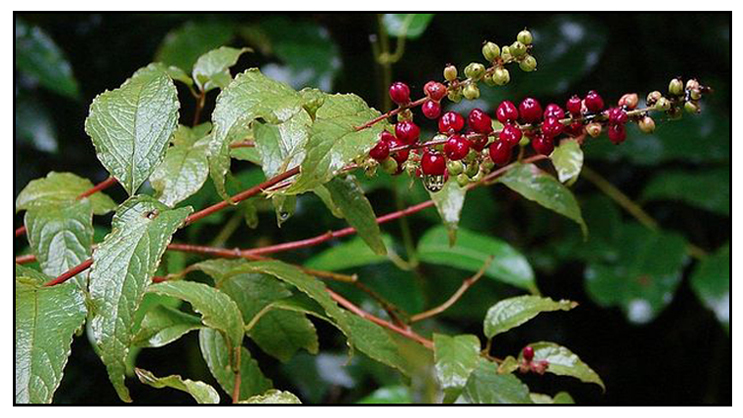
Family • Amaranthaceae
Ditiran
Deeringia amaranthoides (Lamk.) Merr.
SHRUBBY DEERINGIA
Jiang guo xian
| Scientific names | Common names |
| Achyranthes amaranthoides Lam. | Aribugbug (Ilk.) |
| Celosia baccata Retz. | Aribukbuk (Ilk.) |
| Deeringia amaranthoides (Lamk.) Merr. | Ditiran (Tag.) |
| Deeringia baccata Moq. | Hagorilis (Tag.) |
| Deeringia celosioides R. Br. [Illegitimate] | Kanlilimokan (Bis.) |
| Deeringia indica Retz. | Sili-silihan (Tag.) |
| Deeringia virgata Zipp. ex Span. | Suni-suni (Ilk.) |
| Shrubby deeringia (Engl.) | |
| Deeringia amaranthoides (Lam.) Merr. is an accepted name The Plant List | |
| Other vernacular names |
| ASSAMESE: Rangoli-lota. |
| BENGALI: Golamohani. |
| CHINESE: Ye xian cai teng, Di ling xian, Jiang guo xian. |
| HINDI: Kalalori, Latman, Wali. |
| INDIA: Methok thoka, Chhorachurisag. |
| INDONESIA: Bayam besar, Pancaluhur, Bayem luur. |
| HINDI: Kalalobesar, Bajam pohon. |
| THAILAND: Khurea yaang, Phaahom pia a. |
| VIETNAM: D[eef]n leo. |
Last Update September 2015
![]()
 |
| IMAGE SOURCE: Photograph / File:Deeringia amaranthoides.jpg / Tatiana Gerus from Brisbane, Australia / Uploaded by berichard / Creative Commons Attribution 2.0 Generic license. / click on image to see source page / Wikimedia Commons |
| OTHER IMAGE SOURCE: Illustration / File:Deeringia amaranthoides Blanco2.236-original.png / / Francisco Manuel Blanco (O.S.A) / Public Domain / Wikimedia Commons |
Additional
Sources and Suggested Readings |
| It is not uncommon for links on studies/sources to change. Copying and pasting the information on the search window or using the DOI (if available) will often redirect to the new link page. |
• |
 |
• |


 Properties
Properties